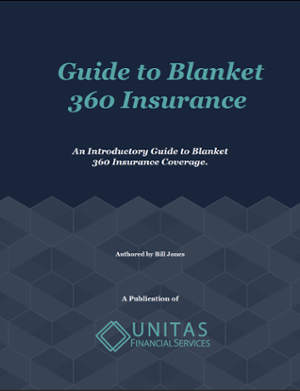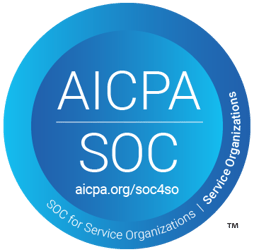 There has been plenty of discussion over the last many months about how the community banking world might look when we come out of this pandemic. Speculation and opinions are all over the board. The economic fallout is of great concern, and community lenders find themselves juggling priorities and recalibrating for the future. On the consumer-facing front, digital banking and technology are hot topics, ‘strategic innovation’ is a focus, and customer relief and mediation tactics are a balancing act. Inside the lending operations, there are concerns about PPP loan forgiveness, increased delinquency and default impacting collections staff, and continued remote workplace struggles with administrative workload balance adjustments across operational teams. Whew. Community lenders have plenty on their plates – with many taking a ‘keep our head above water’ mentality while navigating these difficult times. Many ‘new projects’ have been put on hold. This mindset might seem fine for now, but could this approach lead to some missed opportunities for positive change along the way? Some big changes in the middle of a crisis may be worth considering.
There has been plenty of discussion over the last many months about how the community banking world might look when we come out of this pandemic. Speculation and opinions are all over the board. The economic fallout is of great concern, and community lenders find themselves juggling priorities and recalibrating for the future. On the consumer-facing front, digital banking and technology are hot topics, ‘strategic innovation’ is a focus, and customer relief and mediation tactics are a balancing act. Inside the lending operations, there are concerns about PPP loan forgiveness, increased delinquency and default impacting collections staff, and continued remote workplace struggles with administrative workload balance adjustments across operational teams. Whew. Community lenders have plenty on their plates – with many taking a ‘keep our head above water’ mentality while navigating these difficult times. Many ‘new projects’ have been put on hold. This mindset might seem fine for now, but could this approach lead to some missed opportunities for positive change along the way? Some big changes in the middle of a crisis may be worth considering.
The issues that community banks will face going forward are quite complex -- too numerous to address in one sitting. As the COVID-19 pandemic drags out from a recession into recovery, there is one very specific aspect worth discussing: uninsured loss mitigation within portfolio risk management. This is certainly an area of focused concern for a community lender during these challenging times. But could a bank or credit union look at it more closely with a ‘get lean’ approach to the review?
Many community lenders remain committed to some old-school processes within their loan operations. In some cases, inefficiencies and frustrations can be common issues that are connected to these burdensome administrative strategies. Many fingerprints can be found within these cumbersome procedures, as employees can be quite involved. The structure of these processes within loan operations is anything but ‘lean’. Collateral insurance tracking, along with the action of force-placing insurance, is one of these administrative burdens. Whether a lender tracks in-house or outsources to a paid 3rd party, this work can be frustrating and tiresome. The main objectives are for the lender to be protected against uninsured loss and to meet regulatory demands. If these objectives can be met without any tracking at all, and good employees can be utilized in much more productive roles elsewhere – why wouldn’t a lender consider this alternative?
The community banking model is the definition of relationship banking at its finest. From supporting the communities in which they serve to the valued relationships with customers – community lending has a vital role in keeping their local economies dynamic and growing by lending to good folks within their region. “One element that has kept the traditional model alive for so long is that community banks know their customers – and likewise, their customers know them – which I believe fosters greater customer loyalty,” once said by Ben Bernanke. Why would a bank or credit union want to keep a cumbersome administrative process – cumbersome for both their customers and employees – in place if more efficient and robust solutions exist? Change can be tough to embrace, but we are dealing in a unique and difficult period that requires some outside of the box thinking. Borrowers will also be facing some challenging times ahead in this recovery as they work hard to get through the economic downturn. Does the threat of unbelievably expensive force-placed insurance help that situation? It is not certain if the prevalence of force-placed insurance policies will increase in the coming months, but there is no doubt that an increase in force-placed premium during these delicate times will lead to an increase in loan delinquency and default. Lenders can avoid this pitfall – and give their struggling customers a better chance of survival – by eliminating force-placed insurance altogether.
Taking a 360-degree blanket approach to protect against uninsured loss is one creative way to eliminate the burdensome administrative issues and customer loyalty problems noted above. Innovative blanket portfolio protections can be tailored to fit the risk management goals of any community lender. This type of adjustment can become a ‘get lean’ game changer for a bank or credit union. FTE employees can be utilized in more productive roles within loan operations – especially with the many other changes that are coming down the road for community lenders. This approach will reduce the volume of future charge-offs within the collections department, as eliminating force-placed insurance will provide your good customers a better chance at surviving this downturn. Blanket programs are designed in collaboration with the lender, with protections for residential mortgage lending, commercial real estate and equipment lending, agricultural lending, and consumer lending. Blanket protection can provide 24/7 coverage against uninsured loss along with full compliance with examiners. This type of portfolio protection strategy is not necessarily a ‘new’ offering, but one that sure seems to fit with the issues surrounding the community banking industry today.
Many community lenders that have made the switch to blanket programs share that they ‘will never go back to tracking insurance’. They recognize that the elimination of collateral insurance tracking allows for a greater focus on actual improvements within loan operations and overall lending growth strategies. Some lending veterans have the misconception that ‘blanket insurance is expensive’ – but that does not have to be the case. It is crucial to work with ‘blanket experts’ when reviewing the options. When all factors are considered, there is no doubt a switch to blanket portfolio protections can fit a ‘get lean’ mindset at a community bank or credit union – especially during these remarkably challenging times ahead.
Learn more about Blanket 360 Insurance by clicking below to get our free guide.




